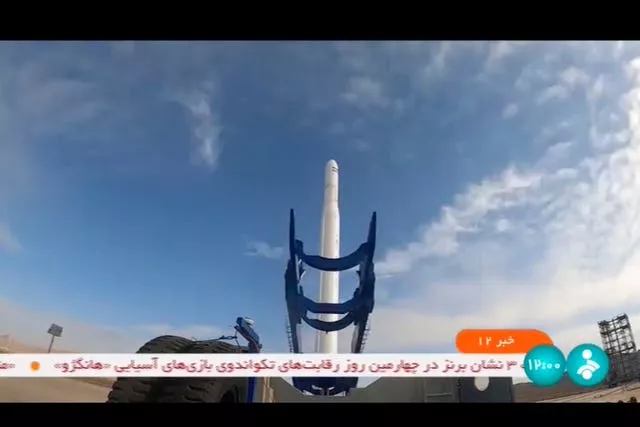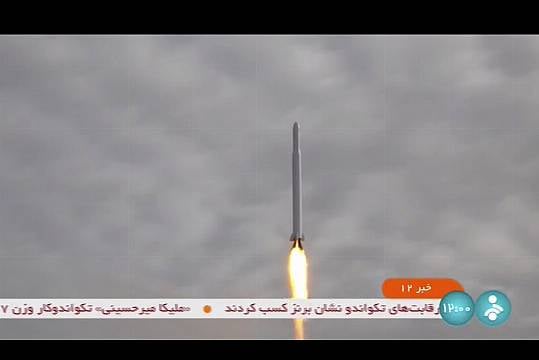The United States has quietly acknowledged that Iran’s paramilitary Revolutionary Guard successfully put an imaging satellite into orbit this week.
The launch resembled others previously criticised by Washington as helping Tehran’s ballistic missile programme.
The US military has not responded to requests for comment since Iran announced the launch of the Noor-3 satellite on Wednesday, the latest successful launch by the Revolutionary Guard after Iran’s civilian space programme faced a series of failed launches in recent years.
Early on Friday, however, data published by the website space-track.org listed a launch on Wednesday by Iran that put the Noor-3 satellite into orbit.
Information for the website is supplied by the 18th Space Defence Squadron of the US Space Force, the newest arm of the American military.
It put the satellite at more than 280 miles above the Earth’s surface, which corresponds to Iranian state media reports regarding the launch.
It also identified the rocket carrying the satellite as a Qased, a three-stage rocket fuelled by both liquid and solid fuels first launched by the Guard in 2020 when it unveiled its up-to-then-secret space programme.

“Noor” means “light” in Farsi, while “Qased” means “messenger”.
Authorities released a video of a rocket taking off from a mobile launcher without saying where it occurred. Details in the video corresponded with a Guard base near Shahroud, about 205 miles north-east of the capital, Tehran.
The base is in Semnan province, which hosts the Imam Khomeini Spaceport from which Iran’s civilian space programme operates.
The website space-track.org also listed the missile as having been launched from the Guard base at Shahroud.
Guard space commander Gen Ali Jafarabadi described the Noor-3 satellite as having “image accuracy that is two and a half times that of the Noor-2 satellite”.
Noor-2, launched in March 2022, remains in orbit. Noor-1, launched in 2020, fell back to Earth last year.
Gen Jafarabadi said Noor-3 has thrusters for the first time that allow it to manoeuvre in orbit. He also offered a wider description of Iran’s hopes for its satellite program, including potentially controlling drones.
That could raise further concerns for the West and Ukraine, which Russia has bombarded with Iranian-made bomb-carrying drones for over a year.
Gen Jafarabadi added: “If you look at the recent wars in the world, you will see that success on the battlefield is very dependent on the use of satellite technologies.
“Now the armed forces in all the progressive countries are trying to make all their equipment remote control, it means that to make it steerable, when a vessel or any other equipment takes a long distance from us, it is no longer possible to see and guide it, except through satellite.”







